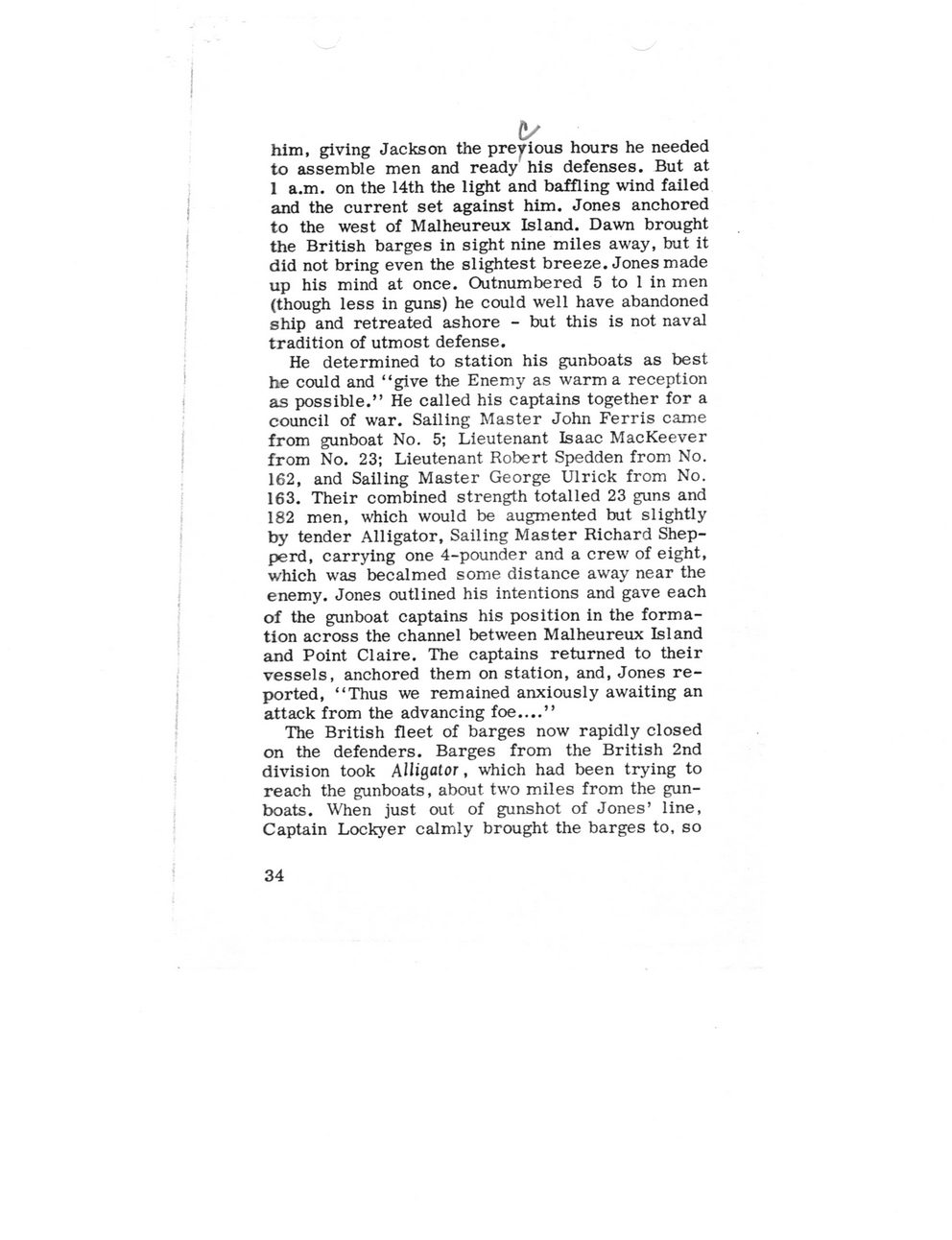This text was obtained via automated optical character recognition.
It has not been edited and may therefore contain several errors.
him, giving Jackson the previous hours he needed to assemble men and ready his defenses. But at 1 a.m. on the 14th the light and baffling wind failed and the current set against him. Jones anchored to the west of Malheureux Island. Dawn brought the British barges in sight nine miles away, but it did not bring even the slightest breeze. Jones made up his mind at once. Outnumbered 5 to 1 in men (though less in guns) he could well have abandoned ship and retreated ashore - but this is not naval tradition of utmost defense. He determined to station his gunboats as best he could and ?give the Enemy as warm a reception as possible.? He called his captains together for a council of war. Sailing Master John Ferris came from gunboat No. 5; Lieutenant Isaac MacKeever from No. 23; Lieutenant Robert Spedden from No. 162, and Sailing Master George Ulrick from No. 163. Their combined strength totalled 23 guns and 182 men, which would be augmented but slightly by tender Alligator, Sailing Master Richard Shep-perd, carrying one 4-pounder and a crew of eight, which was becalmed some distance away near the enemy. Jones outlined his intentions and gave each of the gunboat captains his position in the formation across the channel between Malheureux Island and Point Claire. The captains returned to their vessels, anchored them on station, and, Jones reported, ?Thus we remained anxiously awaiting an attack from the advancing foe....? The British fleet of barges now rapidly closed on the defenders. Barges from the British 2nd division took Alligator, which had been trying to reach the gunboats, about two miles from the gunboats. When just out of gunshot of Jones? line, Captain Lockyer calmly brought the barges to, so 34

Battle of 1814 P34